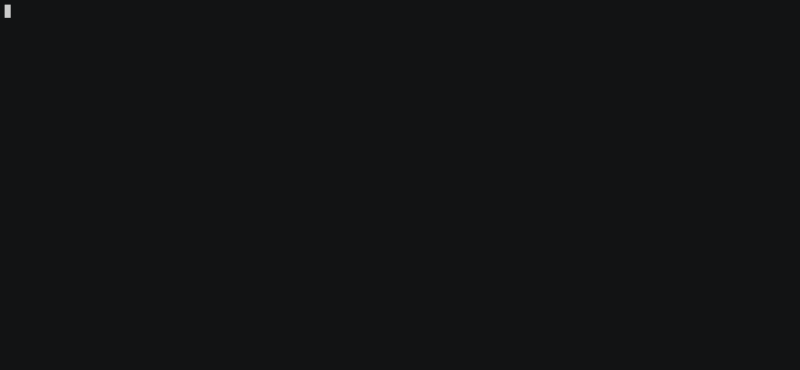3 releases
| new 0.1.2 | May 4, 2025 |
|---|---|
| 0.1.1 | May 3, 2025 |
| 0.1.0 | May 3, 2025 |
#1463 in Command line utilities
307 downloads per month
2MB
1.5K
SLoC
OCI2Git
A Rust application that converts container images (Docker, etc.) to Git repositories. Each container layer is represented as a Git commit, preserving the history and structure of the original image.

Features
- Analyze Docker images and extract layer information
- Create a Git repository where each image layer is represented as a commit
- Support for empty layers (ENV, WORKDIR, etc.) as empty commits
- Complete metadata extraction to Markdown format
- Extensible architecture for supporting different container engines
Use Cases
Layer Diffing
When troubleshooting container issues, you can use Git's powerful diffing capabilities to identify exactly what changed between any two layers. By running git diff between commits, engineers can see precisely which files were added, modified, or deleted, making it much easier to understand the impact of each Dockerfile instruction and locate problematic changes.
Origin Tracking
Using git blame, developers can quickly determine which layer introduced a specific file or line of code. This is particularly valuable when diagnosing issues with configuration files or dependencies. Instead of manually inspecting each layer, you can immediately trace the origin of any file back to its source layer and corresponding Dockerfile instruction.
File Lifecycle Tracking
OCI2Git enables you to follow a specific file's journey throughout the container image's history. You can observe when a file was initially created, how it was modified across layers, and if/when it was eventually removed. This comprehensive view helps understand file evolution without having to manually track changes across potentially dozens of layers.
To track the history of a file in your container image — including when it first appeared, was changed, or deleted — you can use these Git commands after conversion:
# Full history of a file (including renames)
git log --follow -- /rootfs/my/file/path
# First appearance (i.e. creation) - see which layer introduced the file
git log --diff-filter=A -- /rootfs/my/file/path
# All changes made to the file (with diffs)
git log -p --follow -- /rootfs/my/file/path
# When the file was deleted
git log --diff-filter=D -- /rootfs/my/file/path
# Show short commit info (concise layer history)
git log --follow --oneline -- /rootfs/my/file/path
These commands make it simple to trace any file's complete history across container layers without the complexity of manually extracting and comparing layer tarballs.
Multi-Layer Analysis
Sometimes the most insightful comparisons come from examining changes across multiple non-consecutive layers. With OCI2Git, you can use Git's comparison tools to analyze how components evolved over multiple build stages, identifying patterns that might be invisible when looking only at adjacent layers.
Layer Exploration
By using git checkout to move to any specific commit, you can examine the container filesystem exactly as it existed at that layer. This allows developers to inspect the precise state of files and directories at any point in the image's creation process, providing invaluable context when debugging or examining container behavior.
Additional Use Cases
- Security Auditing: Identify exactly when vulnerable packages or configurations were introduced and trace them back to specific build instructions.
- Image Optimization: Analyze layer structures to find redundant operations or large files that could be consolidated, helping to reduce image size.
- Dependency Management: Monitor when dependencies were added, upgraded, or removed across the image history.
- Build Process Improvement: Examine layer composition to optimize Dockerfile instructions for better caching and smaller image size.
- Cross-Image Comparison: Convert multiple related images to Git repositories and use Git's comparison tools to analyze their differences and commonalities.
Installation
From Source
# Clone the repository
git clone https://github.com/your-username/oci2git.git
cd oci2git
# Install locally
cargo install --path .
From Crates.io
cargo install oci2git
Usage
oci2git [OPTIONS] <IMAGE>
Arguments:
<IMAGE> Image name to convert (e.g., 'ubuntu:latest') or path to tarball when using the tar engine
Options:
-o, --output <OUTPUT> Output directory for Git repository [default: ./container_repo]
-e, --engine <ENGINE> Container engine to use (docker, nerdctl, tar) [default: docker]
-h, --help Print help information
-V, --version Print version information
Examples
Using Docker engine (default):
oci2git -o ./ubuntu-repo ubuntu:latest
Using an already downloaded image tarball:
oci2git -e tar -o ./ubuntu-repo /path/to/ubuntu-latest.tar
The tar engine expects a valid OCI format tarball, which is typically created with docker save:
# Create a tarball from a local Docker image
docker save -o ubuntu-latest.tar ubuntu:latest
# Convert the tarball to a Git repository
oci2git -e tar -o ./ubuntu-repo ubuntu-latest.tar
This will create a Git repository in ./ubuntu-repo containing:
Image.md- Complete metadata about the image in Markdown formatrootfs/- The filesystem content from the container
The Git history reflects the container's layer history:
- The first commit contains only the
Image.mdfile with full metadata - Each subsequent commit represents a layer from the original image
- Commits include the Dockerfile command as the commit message
Repository Structure
repository/
├── .git/
├── Image.md # Complete image metadata
└── rootfs/ # Filesystem content from the container
Architecture
The application uses a trait-based approach to abstract container engines:
ContainerEnginetrait defines methods for working with container images- Multiple engine implementations:
DockerEngine- Uses Docker CLI to download and process imagesTarEngine- Works with pre-downloaded OCI/Docker tarballsNerdctlEngine- Stub for future nerdctl support
- Modular design with separate modules for container operations, Git operations, and conversion logic
Requirements
- Rust 2021 edition
- Docker CLI (for Docker engine support)
- Git
License
MIT
Dependencies
~21–33MB
~572K SLoC